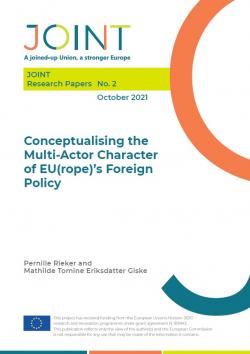Conceptualising the Multi-Actor Character of EU(rope)'s Foreign Policy
Ci sono tantissime teorie che cercano di dare un senso all’Unione europea e alla sua politica estera, ma ancora nessuna di queste teorie è riuscita a catturare la molteplicità dei ruoli degli attori in quella che può essere definita “l’area più ampia della politica estera e di sicurezza dell’Ue ed europea”. Questa lacuna può essere colmata con un quadro concettuale basato sulla letteratura esistente relativa all’integrazione differenziata, che è diventata una caratteristica permanente dell’integrazione europea. Tale quadro, basato su un approccio olistico alla politica estera e di sicurezza dell’Ue e che guarda sia ai processi formali che a quelli informali, spiega il carattere multiattore dell’Ue, introducendo al contempo i cinque ruoli – leader, seguaci, ritardatari, disgregatori o abbandonanti – che gli attori possono avere nel processo di integrazione, sia per portarlo avanti che per fermarlo.
-
Dati bibliografici
Roma, IAI, ottobre 2021, 34 p. -
In:
-
Numero
JOINT Research Paper 2
Introduction
1. The limits of mainstream theories
1.1 EU foreign and security policy as the sum of its parts
1.2 EU foreign and security policy as more than the sum of its parts
2. The added value of multi-level governance and differentiated integration
2.1 Differentiated integration as a new subfield in EU studies
2.2 Differentiated integration in the field of foreign and security policy
3. A new conceptual framework for EU(ropean) foreign policy
3.1 Moving beyond the CFSP/CSDP and the “integrated approach”
3.2 Moving beyond formal differentiated integration
3.3 A framework for studying EU(rope)’s role in the world
3.4 Introducing the role of agency
Conclusions
References




